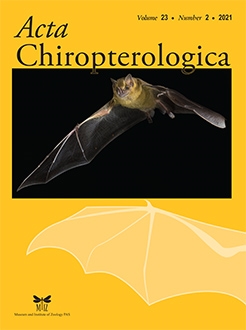As many as 17 subspecies are currently recognized for the lesser false vampire, Megaderma spasma along its wide distributional range, from India to Southeast Asia. Cytogenetic studies have been so far restricted to specimens from only four geographical regions, namely Malaysia, Thailand, China and the Philippines. We examined the karyotypes of M. spasma medium from Peninsular Malaysia and M. s. trifolium from Malaysian Borneo with conventional and molecular cytogenetic techniques, using whole chromosome painting probes from the vespertilionid Myotis myotis and the hipposiderid Aselliscus stoliczkanus. Both Megaderma subspecies showed the same diploid chromosome number, 2n = 38, but differed concerning interstitial heterochromatic segments and number and shape of heterochromatic B chromosomes. Comparison with published data revealed that the Bornean specimens' karyotype best resembled the chromosomal set of the Chinese specimen. In contrast, a single male specimen from Malaysian Borneo showed a different karyotype (2n = 40) without B chromosomes and interstitial heterochromatin, indicating that it may represent a cryptic, yet unknown Megaderma species.
How to translate text using browser tools
14 February 2022
Cytogenetic Analyses Detect Cryptic Diversity in Megaderma spasma from Malaysia
Marianne Volleth,
Stefan Müller,
Klaus-Gerhard Heller,
Vladimir Trifonov,
Thomas Liehr,
Hoi-Sen Yong,
Robert J. Baker,
Faisal A. Anwarali Khan,
Cibele G. Sotero-Caio
ACCESS THE FULL ARTICLE

Acta Chiropterologica
Vol. 23 • No. 2
December 2021
Vol. 23 • No. 2
December 2021
chromosomal evolution
Cytotaxonomy
fluorescence in-situ hybridization
karyotype




